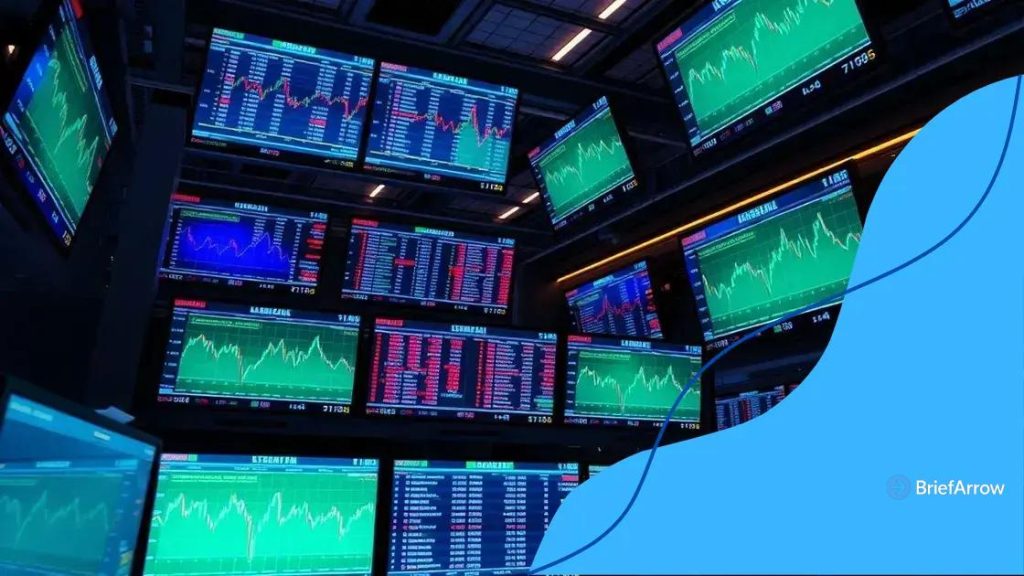Regulatory landscape for algorithmic trading evolves significantly

Anúncios
The regulatory landscape for algorithmic trading evolves constantly, focusing on increased transparency, enhanced risk management, and the need for compliance to ensure market integrity and protect investors.
The regulatory landscape for algorithmic trading evolves continuously, shaping how traders and investors navigate the markets. As changes occur, it’s crucial to stay informed about the rules that dictate trading practices.
Anúncios
Current regulations affecting algorithmic trading
Understanding the current regulations affecting algorithmic trading is essential for anyone involved in this complex field. As technology evolves, so too do the rules that govern trading practices, making it crucial to keep abreast of these changes.
Key Regulatory Bodies
Several agencies oversee algorithmic trading regulations. These organizations help maintain market integrity and protect investors. Key players include:
- The Securities and Exchange Commission (SEC)
- The Commodity Futures Trading Commission (CFTC)
- Financial Industry Regulatory Authority (FINRA)
In addition to these, exchanges like the New York Stock Exchange (NYSE) also impose their own rules. Each regulatory body plays a vital role in shaping the trading environment.
Anúncios
Important Regulations
Among the main regulations impacting algorithmic trading, the following are critical:
- Regulation NMS: This ensures fair access to stock exchanges.
- Market Access Rule: This rule requires firms to have safeguards before accessing the markets.
- MiFID II: This EU directive enhances transparency and accountability in trading.
Being successful means understanding how these regulations work and ensuring compliance. Staying informed can help traders avoid costly penalties.
Moreover, the impact of algorithmic trading on market dynamics is significant. Increased automation can lead to faster executions, but it also raises concerns about market volatility. For example, flash crashes have prompted regulators to impose stricter rules to protect investors.
As the landscape continues to change, so will the requirements for algorithmic trading. Keeping this dynamic in mind will be vital for traders looking to excel in the market.
How regulations ensure market integrity
Regulations play a crucial role in ensuring market integrity. They serve to create a level playing field, safeguarding both individual investors and large institutions. By implementing rules, authorities aim to build trust and transparency in the financial markets.
Key Aspects of Market Integrity
Several essential aspects underlie the impact of regulations on market integrity. These include:
- Preventing fraud: Regulations deter dishonest practices and fraudulent activities.
- Ensuring fair trading: They promote equal access to information and opportunities for all market participants.
- Market transparency: Rules mandate disclosure of critical information, allowing everyone to make informed decisions.
These elements work together to create a stable trading environment. When traders trust that the system is fair, they are more likely to participate actively.
The Role of Surveillance
Another vital function of regulations is the enforcement of surveillance mechanisms. Regulators use sophisticated technologies to monitor trading activities. This helps identify irregularities and potential manipulative behaviors that may threaten market integrity.
Moreover, regular audits and compliance checks ensure that firms adhere to the rules. Non-compliance can lead to significant penalties, reinforcing the importance of adherence.
As regulations adapt to new market dynamics, they continue shaping the landscape for algorithmic trading. Understanding how these rules work is essential for traders aiming to navigate successfully through the complexities of the market.
Impact of technological advancements on regulations

The impact of technological advancements on regulations is significant. As trading technology evolves, regulators face new challenges and opportunities in maintaining fair markets.
Emerging Technologies in Trading
Technologies like artificial intelligence and machine learning are transforming how trades are executed. These tools allow for faster decision-making and more sophisticated trading strategies. However, they also complicate the regulatory landscape.
- Automated trading systems can create new risks, such as market volatility.
- High-frequency trading can lead to rapid price movements.
- Data analytics are increasingly important for surveillance and compliance.
As a result, regulators must adapt their frameworks to address these changes. The challenge lies in balancing innovation with the need for stability in the markets.
Regulatory Adaptation
In response to these advancements, regulatory bodies are updating existing rules. For instance, they may require additional transparency in algorithmic trading strategies. New guidelines often focus on:
- Increasing the reporting obligations for firms.
- Ensuring adequate risk management practices.
- Establishing clear accountability for automated systems.
These measures aim to mitigate risks brought on by rapid technological shifts. By ensuring compliance, regulators help maintain user trust.
Furthermore, collaboration between industry players and regulators is becoming essential. Stakeholders often participate in discussions to shape regulations that support both innovation and market integrity. This cooperative approach helps create a sustainable trading environment that benefits all participants.
Challenges traders face in a changing landscape
Traders today encounter numerous challenges in a rapidly evolving landscape. The changing regulations and technological advancements create a complex environment that can be difficult to navigate.
Adapting to New Regulations
One major challenge is staying compliant with new regulations. As laws change frequently, traders must continually educate themselves. Key areas of focus include:
- Understanding updates to trading requirements.
- Staying informed about market structure changes.
- Adjusting trading strategies to meet compliance standards.
Failing to keep up can result in costly penalties. Thus, a proactive approach is necessary for success.
Technological Competitiveness
Another hurdle is the need for technological adaptation. As algorithms become more sophisticated, traders face pressure to use similar or better technology. Successful traders often rely on:
- High-frequency trading systems for quick execution.
- Advanced analytics tools to make informed decisions.
- Real-time data feeds to monitor market changes.
This competition can be daunting, especially for smaller firms that may lack resources. It’s essential to invest wisely in technology to remain relevant.
Additionally, market volatility can present significant risks. Sudden price movements can impact trades drastically. Many traders use risk management techniques to mitigate these effects. Strategies such as stop-loss orders help protect investments, but they require careful planning.
Furthermore, the psychological aspect of trading shouldn’t be underestimated. The pressure to perform under such conditions may lead to stress and anxiety. Finding a balance between emotional discipline and trading strategy is crucial for long-term success.
Future trends in algorithmic trading regulations
Future trends in algorithmic trading regulations are likely to evolve as markets and technologies change. Understanding these potential shifts can help traders and firms prepare for what lies ahead.
Increased Focus on Transparency
One key trend is an increased emphasis on transparency. Regulators are likely to require more disclosure about trading algorithms and strategies. This shift could include:
- Detailed reporting on the decision-making processes of algorithms.
- Mandatory publishing of performance metrics for trading systems.
- Greater insight into potential risks and conflict of interest.
Transparency aims to build trust in the market and reduce manipulation risks, ensuring fair access for all participants.
Enhanced Risk Management Standards
Regulators are also expected to establish stricter risk management standards. With the rise of high-frequency trading and automated strategies, the potential for market disruptions increases. Traders may need to implement:
- Robust systems for monitoring and controlling risks.
- Regular audits to ensure compliance with evolving regulations.
- Risk assessment protocols for new trading technologies.
These measures could help mitigate systemic risks and protect market integrity.
Technological advancements will also influence regulatory frameworks. As new tools emerge, regulators will likely update rules to address the unique challenges they present. For instance, the use of artificial intelligence in trading can reshape compliance requirements. The ability to quickly analyze vast amounts of data necessitates updated guidelines that reflect the realities of modern trading.
Finally, collaboration between regulators, firms, and technology providers will become increasingly important. By working together, stakeholders can develop regulations that support innovation while safeguarding market stability. This partnership could lead to more adaptive regulations that keep pace with technological changes.
In conclusion, the regulatory landscape for algorithmic trading is constantly evolving. Key trends point toward increased transparency, enhanced risk management, and collaboration among market participants. Staying informed about these changes is essential for traders aiming to navigate this complex environment successfully. As technology continues to advance, regulations will adapt, ensuring that markets remain fair and efficient. By embracing these upcoming trends, traders can better prepare themselves and maintain a competitive edge.
FAQ – Frequently Asked Questions about Algorithmic Trading Regulations
What are the main factors driving changes in algorithmic trading regulations?
Technological advancements, market volatility, and the need for enhanced transparency are key factors driving changes in algorithmic trading regulations.
How can traders ensure compliance with new regulations?
Traders should stay informed about regulatory updates, implement robust risk management practices, and invest in compliance training.
Why is transparency important in algorithmic trading?
Transparency builds trust among market participants and helps mitigate the risks of manipulation and misinformation.
What role does technology play in shaping future regulations?
Technology influences regulations by introducing new trading methods that require updated guidelines to ensure market fairness and stability.